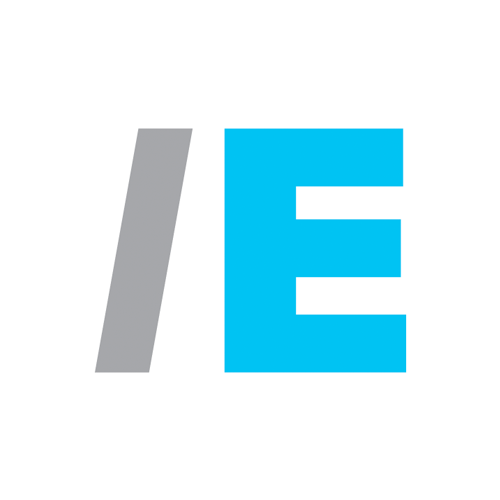The move to cloud computing and the use of advanced technologies have made remote and hybrid work more feasible than ever before. They have also increased capabilities in practically every aspect of a business’s operations—from development to marketing to production. Despite the numerous positives, however, all this has brought about security risks that require a new approach. Although many companies are embracing Zero Trust as a method of defending against these evolving threats, they still lack guidance on actual solutions. With Cisco’s SASE solutions, Zero Trust standards are incorporated into the relatively new Secure Access Service Edge (SASE) framework.
Will Scruggs, Product Business Manager for Cisco Enterprise Networking at TD SYNNEX, explained in an interview with EDGE360, “As partners help their customers on this cloud journey, it’s important for them to understand they can open themselves up to more threats and vulnerabilities that older network equipment can’t keep up with (i.e., encrypted traffic and increase of devices).” For partners to help their customers properly secure their networks, it’s vital that they understand what the solution accomplishes and how it can be used. A newly released video series from TD SYNNEX covers three major topics: Building a SASE platform, Cisco SASE solutions, and SASE use cases. These videos are beneficial to partners because “they can learn something new or refresh on knowledge they have with a touch of a button on their own time,” Scruggs emphasized.
Building a SASE Platform
Helping customers build their SASE platform is an easy but important part of using Cisco SASE solutions. In the same interview with EDGE360, James McGregor, Product Business Manager for Cisco Security at TD SYNNEX, said, “In a distributed workforce environment (hybrid and remote), the concept of SASE ensures the same security standards you would have had when your workforce was fully onsite. As organizations adopt more SD-WAN and cloud capabilities, it is important to have a secure solution that also doesn’t disrupt their application experiences.” Successful implementation involves in-depth planning, preparation, and a comprehensive understanding of existing infrastructure.
This thirteen-minute video, Building a SASE Platform, goes into the steps a customer needs to take to be successful. These steps start with the very basic, defining the business’ SASE goals, taking into account adopting Zero Trust, and including planning for support configuration and continual monitoring. Although there may be some challenges in building a SASE platform, namely difficulty moving out of network and security silos and requiring a change in IT culture, the benefits far outweigh them. The biggest SASE benefit is the support of cloud-based enterprise security versus on-premises security. Additionally, SASE allows for applications to live anywhere, with centralized, dynamic, role-based policies that streamline operations, integrated security and routing, reduced WAN costs, and distributed architecture.
Cisco SASE Solutions
For the most part, SASE isn’t exactly a new technology, but a new approach to address businesses’ evolving security needs. “Cisco has created a SASE solution that works seamlessly together so customers are buying a solution rather than components,” Scruggs said. Understanding these solutions and their capabilities allows partners to pass this valuable information on to their own customers. This five-video series, Cisco SASE Solutions, focuses on Umbrella, Meraki and Viptela, Duo, SecureX, and Talos. These videos can be consumed in less than an hour but give an in-depth look at Cisco SASE solutions.
Cisco’s Umbrella, for example, is a highly elastic, cloud-native security service. In terms of SASE, some of its key benefits include delivering access that’s closer to the user and the cloud edge and consolidating security into a single cloud solution and framework. Another example, Cisco’s Duo, the leading multi-factor authentication (MFA) and secure access provider, is a cloud-based MFA platform. It is a security approach where all traffic or sources of traffic are suspect, even if the traffic source is a reliable employee. Umbrella is integrated with Zero Trust technology from Duo security.
SASE Use Cases
Not only must partners understand the solutions, but they must also understand how the solutions are being used and can be used by businesses. This series, SASE Use Cases, also contains five videos and covers hybrid and secure remote work, along with secure edge and user benefits.
Millions of Americans work from home or in hybrid situations, and this number has only increased since 2019, which is why it is essential to protect the workers and the data being shared. SASE solutions provide networking and security capabilities for a growing workforce. For hybrid and remote setups, it offers scalability, flexibility, and secure connectivity. As opposed to a traditional, data-centered security, the SASE security model is placed at the cloud edge and offers security from end-to-end, the data center, remote offices, roaming users, and beyond.
Let EDGE PBMs Help You
SASE is the future state of network security. It’s vital for partners to understand Cisco’s SASE solutions to inform customers about what’s best for them. The first thing that partners can do is watch the series of videos from TD SYNNEX, which contains an abundance of useful information. To help partners earn VIP rebate money to increase their profitability, Cisco has created a SASE Specialization. The team at TD SYNNEX is available to help partners roadmap this specialization, and much more. McGregor said, “Our EDGE PBMs are here to help answer any questions you might have to make sure your sellers and engineers are comfortable with this. Whether it’s certification-based or just general training, we have an abundance of resources to help you along this journey.”

Author
-

The EDGE360 editorial team consists of Jackie Davis, Katherine Samiljan, and Jessie Tobin. You can reach the team at EDGE360@gotostrategic.com.





